If you want to skip directly to the other part, then just hit
Part II - Pagsanjan/Lake Taal/Puerto Galera/Manila
Introduction
This is an abridged description of a trip to the Philippines in November 1985. The intention is to give a firsthand personal experience of how I did get to and through the country. Despite the fact that I did not book anything in advance at all (except for the flight) it was no problem getting any means of transport or accommodation on the same day. I only did some kind of pre-planning in so far that I wanted to be back in Manila at least a day before my return flight to Germany.
At the time of writing all this, more than 23 years have passed. What I had seen and experienced, may not be the way today anymore. Actually cultures and customs have not changed that much in the Philippines but more so the environment and definitely not to the better. In 1985, I experienced almost no congestions in the streets, I breathed almost clean air, swam in comparatively clean lakes and did get wet from clean river water, sunbathed on clean beaches and swam in clean seawater.
This is actually the second part of my trip. The first part is listed under Malaysia. I flew with Malaysian Airline from Frankfurt to Kota Kinabalu in Sabah via Kuala Lumpur, then to Manila and then back to Frankfurt via Kuala Lumpur again.
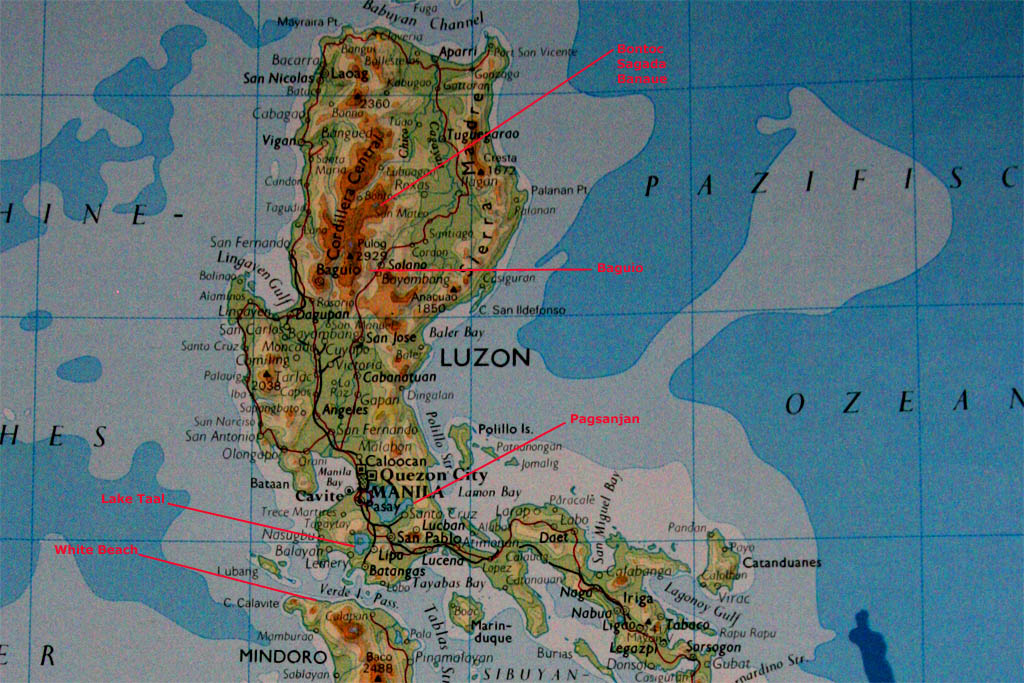
Manila
I arrived in Manila during the day from my short flight from Kota Kinabalu. Instead of taking a taxi (though cheap) l was doing it the hard way (again): Getting on a city bus at a bus stop close to the airport to get into the city center, whatever that meant, because there are many city centers as I later found out. But at least I asked for Ermita, supposedly having a traveler's scene according to my guidebook (and not only that). Unfortunately the bus did not go there directly and I had to get off at Taft Avenue and from there I walked while asking questions for directions. Finally I checked in at a cheap hotel in the MH Del Pilar street.
First thing was walking around to investigate the surrounding. I always had the habit to head first to the beach or at least to any seaside if close by. Just the next parallel road was the impressive six lane Roxas Boulevard stretching all along Manila Bay. But what a beach. Just next to the American Embassy I saw squatters attached to the quay wall, the rich and the poor so close together. It was the year 1985. Dictator Marcos was still ruling. Demonstrations and hunger strike posters already in the streets. But it needed another six months until this amounted to the ousting of president Marcos by the "People Power" of EDSA.
Remark: The photos on the right side may not be correctly adjusted if you use Mozilla Firefox or Chrome. I propose to use the Explorer of Microsoft instead.
Click the small picture to get it enlarged
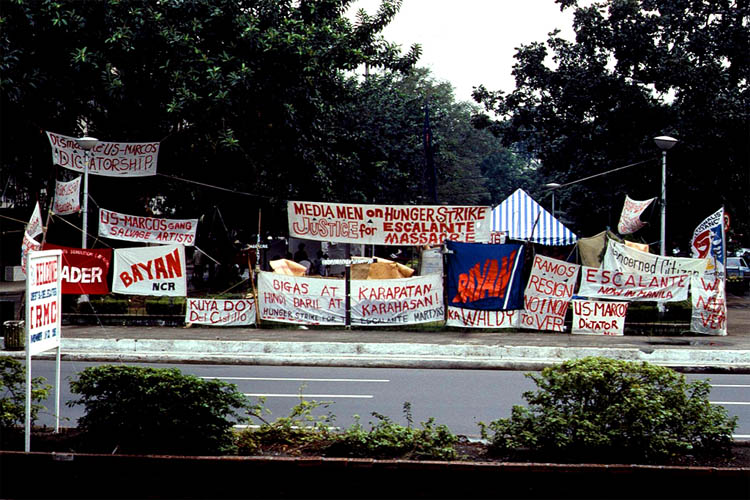
| Manila is demon-strating
|
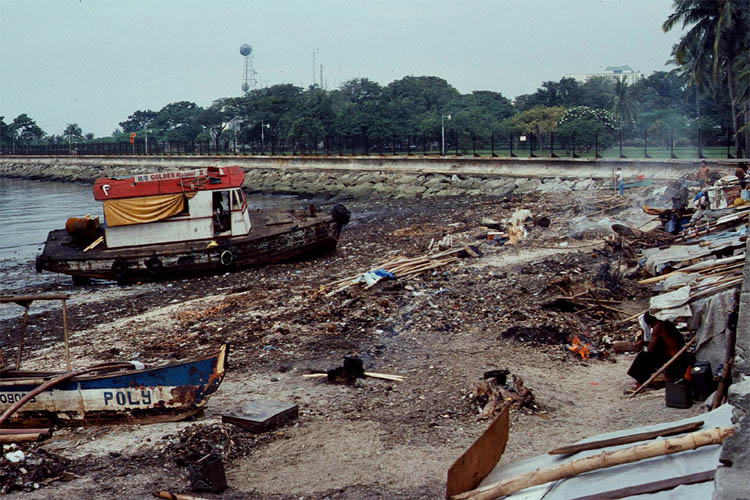
| Dirty Manila Bay beach
|
The posters were very well placed in front of the American Embassy. Even if American tolerated this dictatorship it would probably not have tolerated demonstration posters to be torn down in front of them, though they were even partially directed against them (obeying the First Amendment of the American Constitution). What surprised me also was that the Philippines itself enjoyed a relatively free press at that time.
So Marcos didn't try to purge or sweep out all opposition (whatever was left of it), but only let sweep the streets, especially on the boulevard to show off when state guests were arriving and led through here. For some people it was the good old times: the country experienced less graft and corruption during his reign, because Marcos didn't allow anybody to be corrupt more or less, except him and his cronies. Ok, that's my humble opinion.
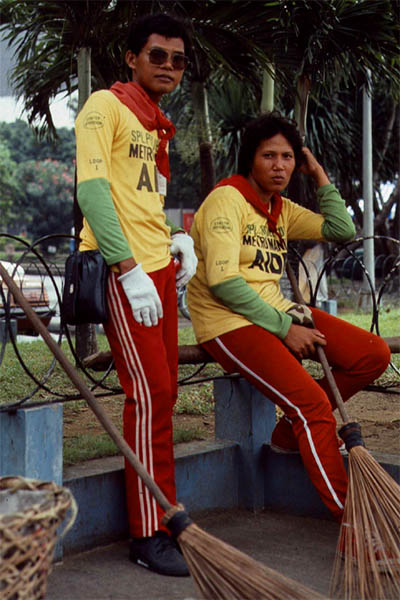
| Trying to keep the streets clean
|
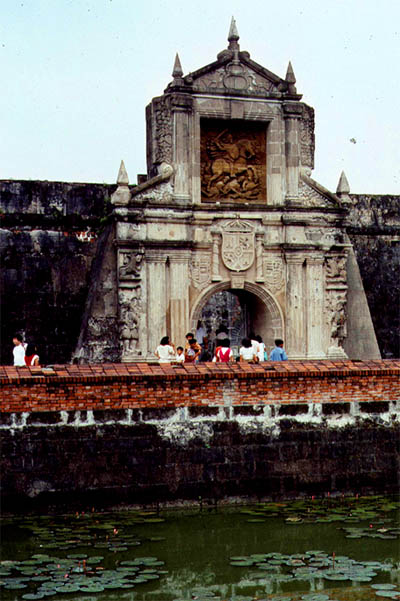
| Entrance to the Fort Santiago
|
Other people also think of the good old times a little farther in the past. Manila was called the Pearl of the Orient in the old days. The Spaniards made Manila the capital in 1671 and have since then held it and defended it from their Fort Santiago until 1898. Here, also the Philippine hero and freedom fighter Jose Rizal was held captive before he was executed during the last years of Spanish rule in 1896.
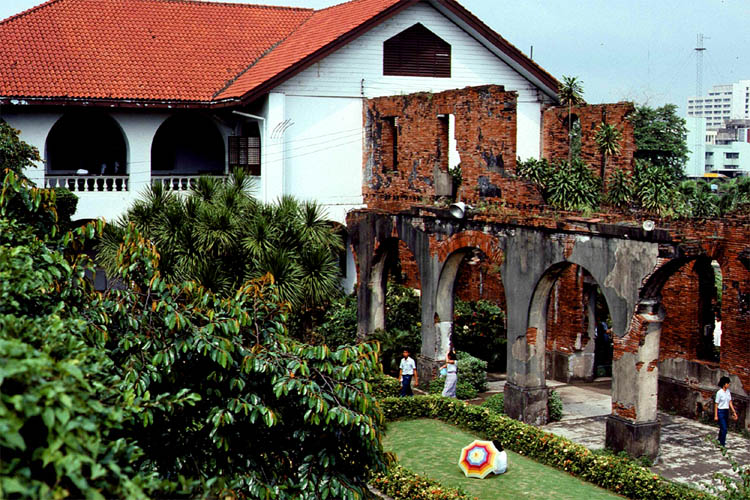
| Here Rizal was held captive
|
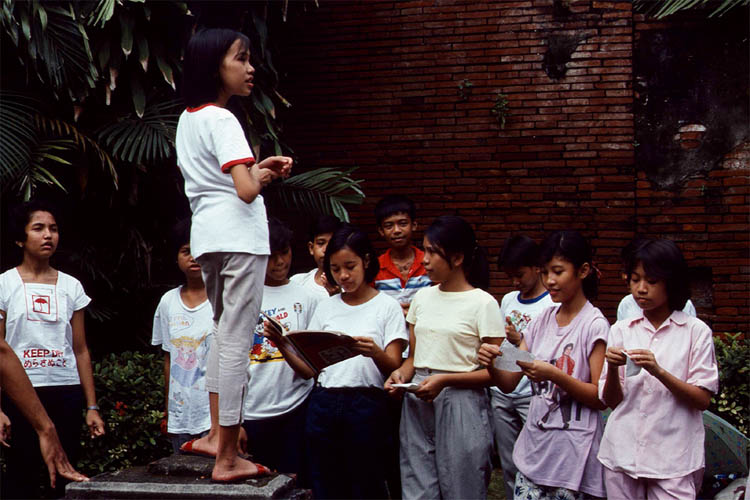
| Compuls-ory lesson about history
|
Fort Santiago is part of the old town of Manila, called Intramuros, which means "within walls". Some of the old houses have been restored and shows the wealth of the old inhabitants. Unfortunately, many houses in some side streets are slowly decaying.
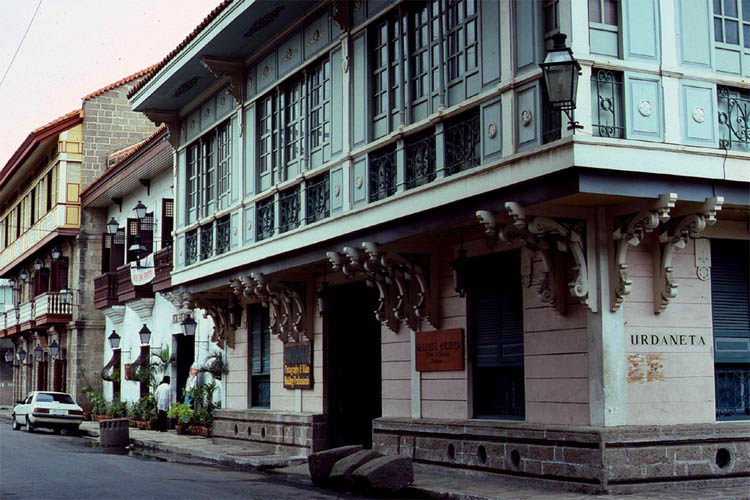
| Old Spanish house in Intramuros
|
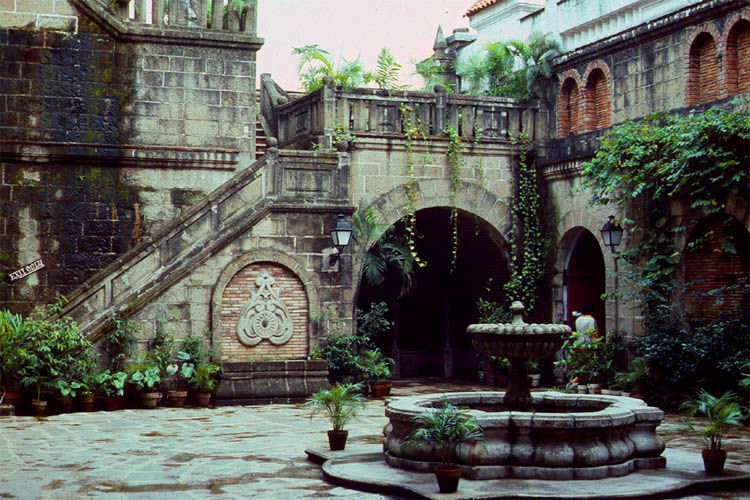
| and a patio with another intramuros
|
There is a more unobstructed view of the wall from the outside Not far from here is also the large Rizal Park, which I had to cross to get back to Ermita.
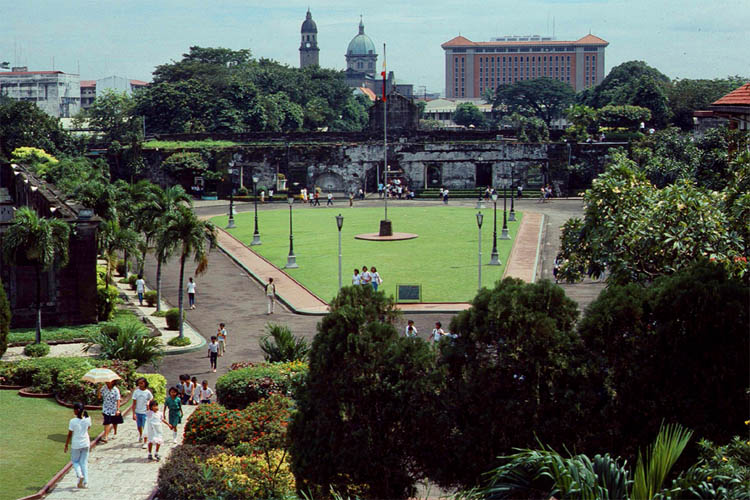
| A nice park outside the muros
|
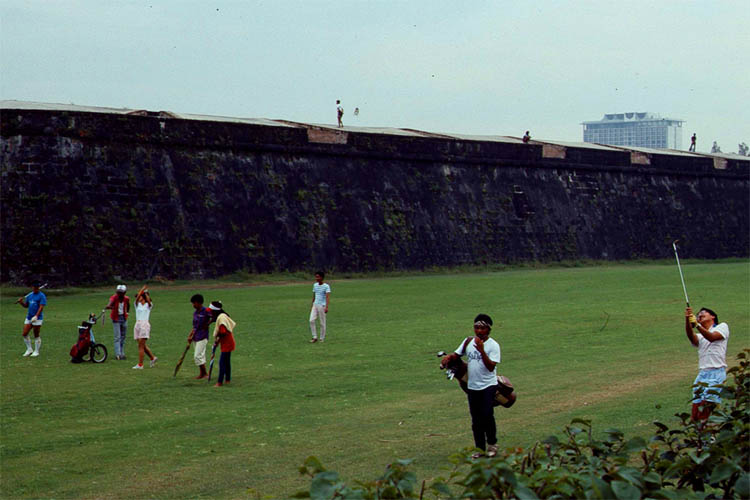
| and a golf course along the muros
|
As I have mentioned before, Ermita had more to offer than just the traveler's scene: A lot of girlie bars beside many restaurants. Ok, the first had to disappear some later years, the latter are still there, not necessarily the Edelweiss but its affiliate, the München.
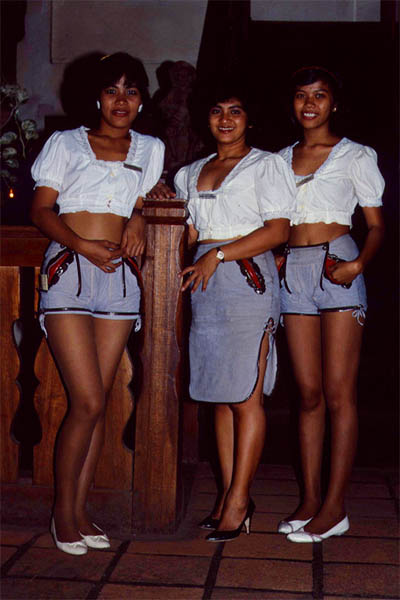
| Eating in a Bavarian Restaurant
|
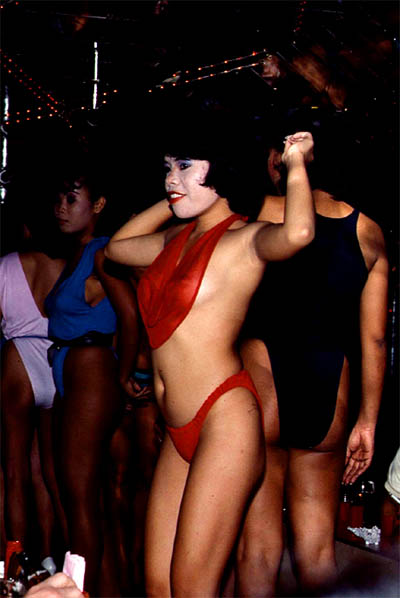
| and then having a drink in a go-go bar
|
Jeepneys are the main passenger transport vehicles within the city. They have been designed and built from the remnant Jeeps left by the Americans after World War II. Some are enhanced with all sorts of emblems and gadgets and painted in beautiful colors.
The jeepneys are plying certain routes having a sign of their current destination behind the windshield. So you have to know whether your destination will be on its way. I knew that I had to get to a certain bus terminal (there are many in Manila) for my planned trip to Baguio.
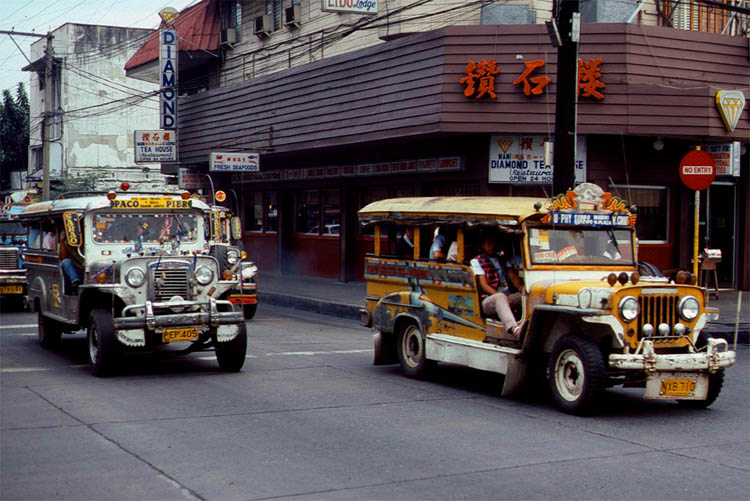
| Jeepneys are very convenient
|
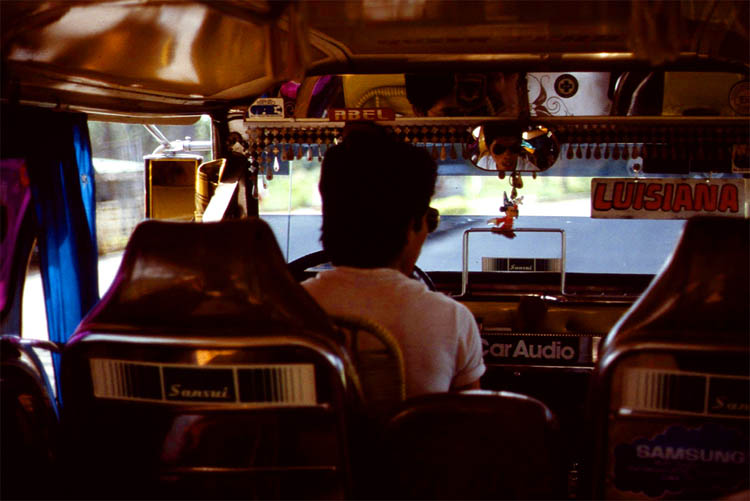
| and are even owner's pride
|
Baguio was the summer retreat of Marcos and his cronies (and other wealthy people). For me it was just an overnight stay on the way to Bontoc the next day. And there were a lot of poor people too, and crooks. I was warned not to accept any invitation by locals for a drink, which may contain some knock-out agent which let you wake up in the woods without your wallet. And that was exactly what I was offered by two young men. They even told me that their uncle is driving to Bontoc next day and I can get a lift. What a coincident. That scam looked obvious. l declined.
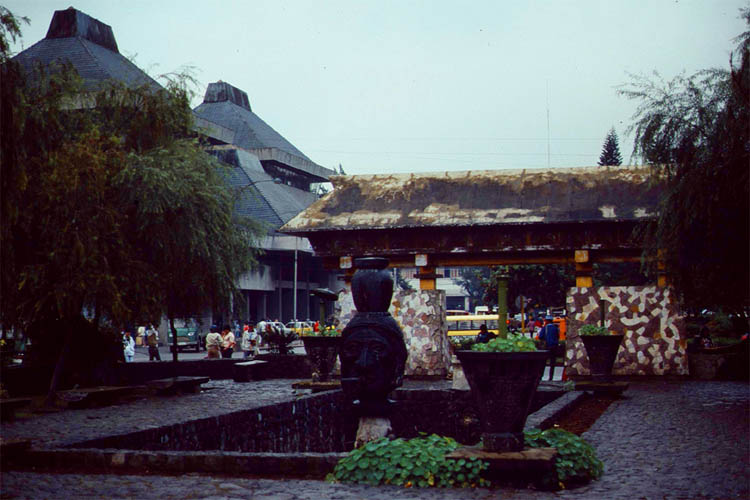
| Baguio center
|
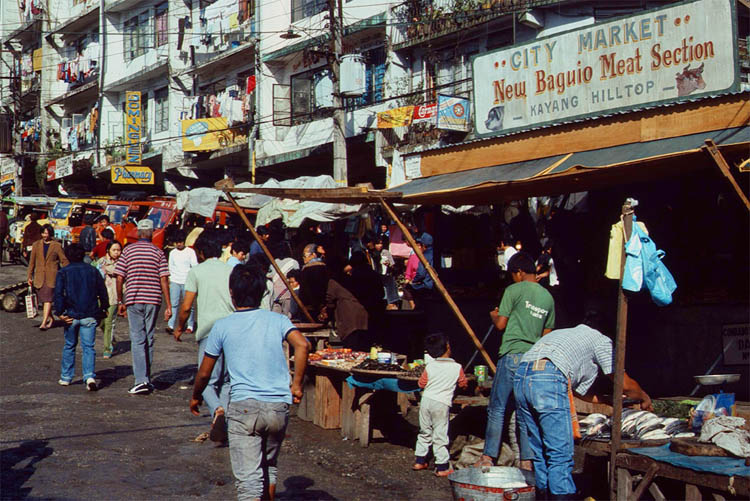
| Baguio street
|
Without much ado I left early morning by bus to Bontoc. And I wasn't alone. A young Swedish guy joined me on that trip. He was very talkative and told me that a Filipino millionaire's daughter wanted to marry him, but he escaped. Somehow I didn't get or forgot why? I know that blond, fair skinned longnoses are preferred husbands by Filipinas.
While we bounced forward on a bumpy dirt road (though called highway, maybe because it was 2000 meters high at some points) I had to look out of the window any moment thinking that we will fall 500 meters deep into the gorge. I neither saw anything of the road nor any shoulder. On the other side just steep rocks. Luckily we safely arrived in Bontoc after seven hours or so.
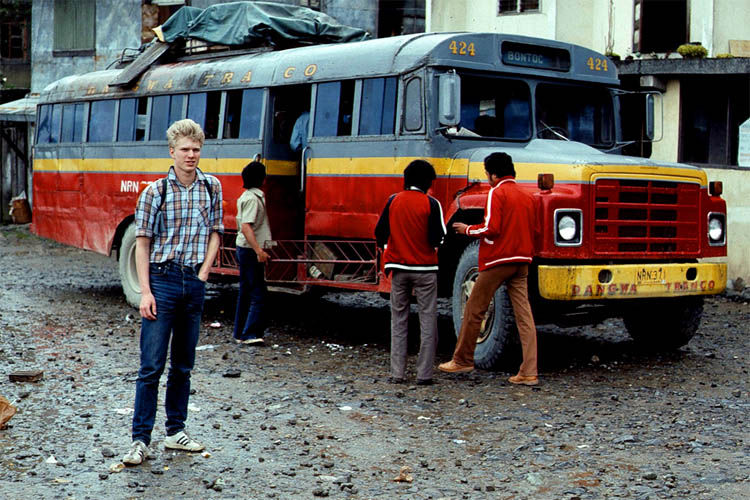
| Bus to Bontoc
|

| Arriving in Bontoc
|
Bontoc is also the name of the province where the indigenous people of the Bontoc lives, one of the many tribes here in the cordilleras and commonly known as Igorots. Not much to see in and around the town except for their little museum. It shows their funeral rites and how the heads were cut off from their enemies (photographs of some beheaded missionaries who could not convince the headhunters that they are neither their enemies nor that they should love their enemies).
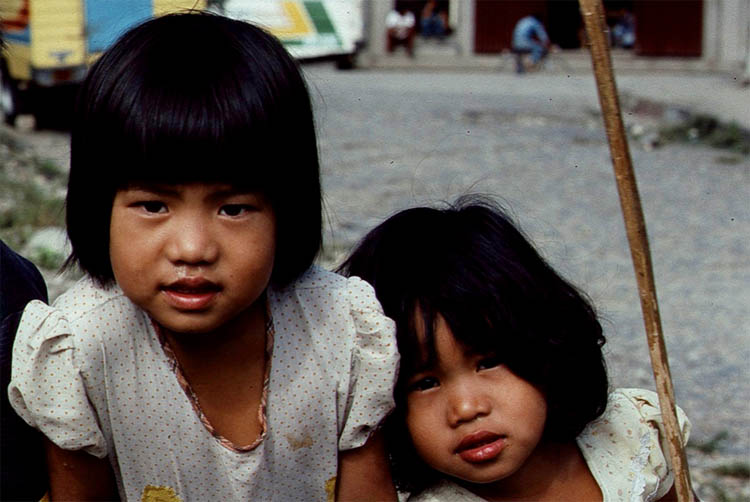
| Young ladies in Bontoc
|
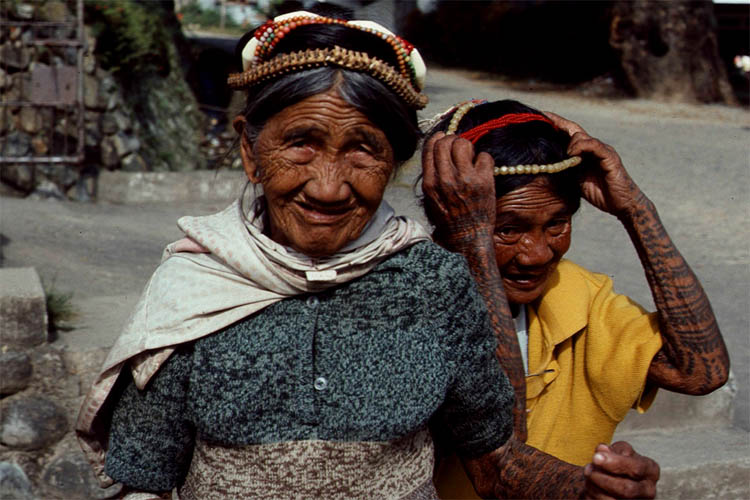
| Old ladies in Bontoc
|

| Soon the old ladies will have a funeral like this
|

| here you can read about the procedure
|
We didn't stay long in Bontoc. Same day we continued by bus to Sagada. Another traveler joined us: a guy from Munich. We all settled down in the Sagada Guesthouse in the middle of the town. First thing next day was to explore one of the famous caves around with a guide we hired the day on our arrival. But where is our Swedish guy? He left for a walk early in the morning but didn't come back yet (he turned up in the evening with dirt clothes and a scratched hands and face and told us that he did get lost after sliding down a hill and had a hard time to get back).
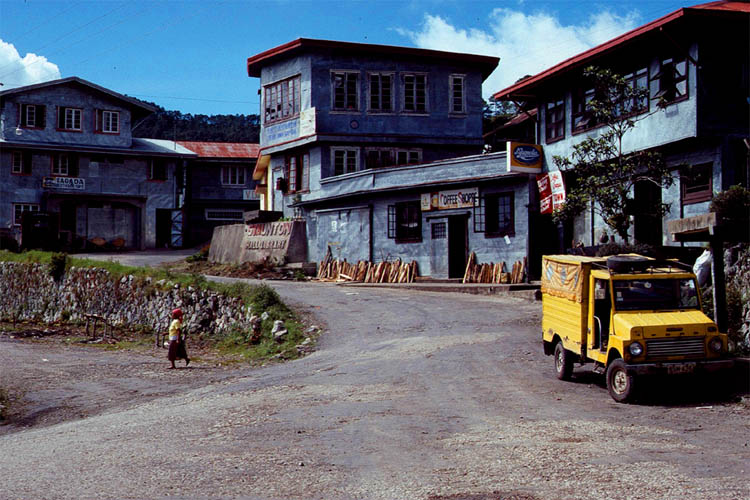
| Sagada town
|
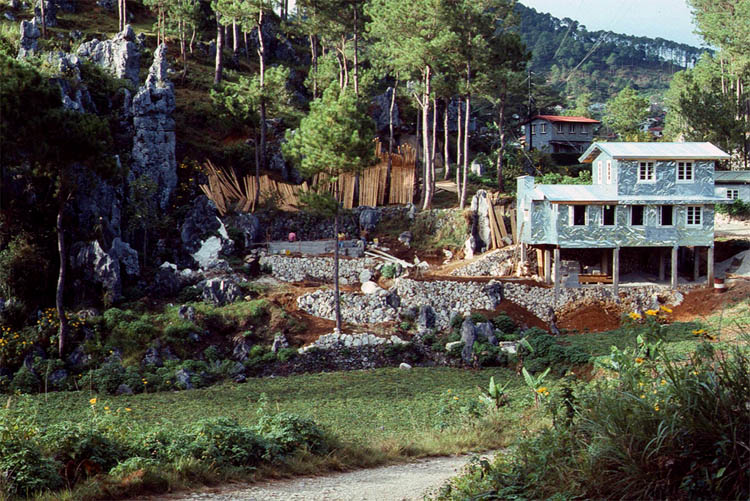
| Sagada outskirt
|
On our way we met some Igorots of whatever tribe. They still live their traditional life. Many have converted to Christianity, but many still stick to their animistic beliefs. I looked at the old guy and said hello and hold up my camera. I took the absence of any first response as an approval to take a shot of him. And when I clicked the shutter he may have had a second thought.

| Indigenous from behind
|
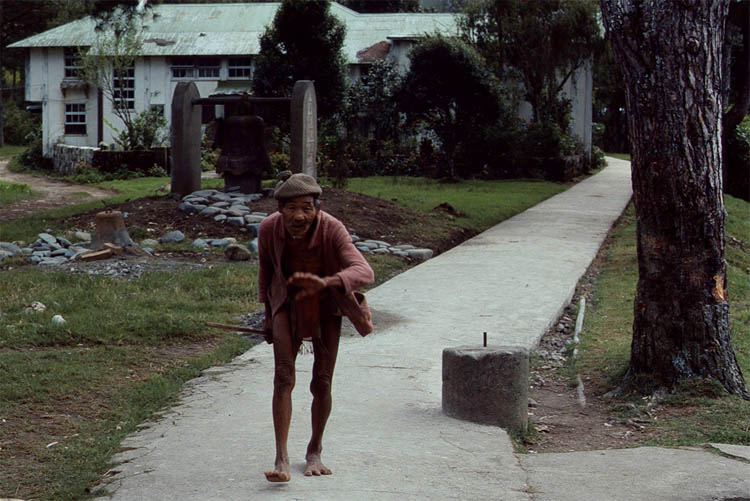
| Indigenous from the front
|
Then we passed through the rugged countryside with their cliffs and hanging coffins (you see them in the middle of the next photograph) and rice terraces until we reached the entrance of the cave, which we would have easily missed if the guide would not have led us. According to the guidebook it must have been the Sumaging cave.
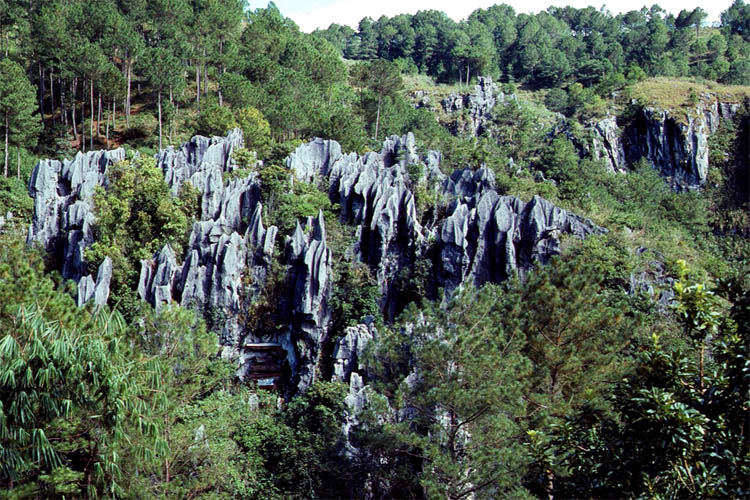
| Sagada cliffs
|
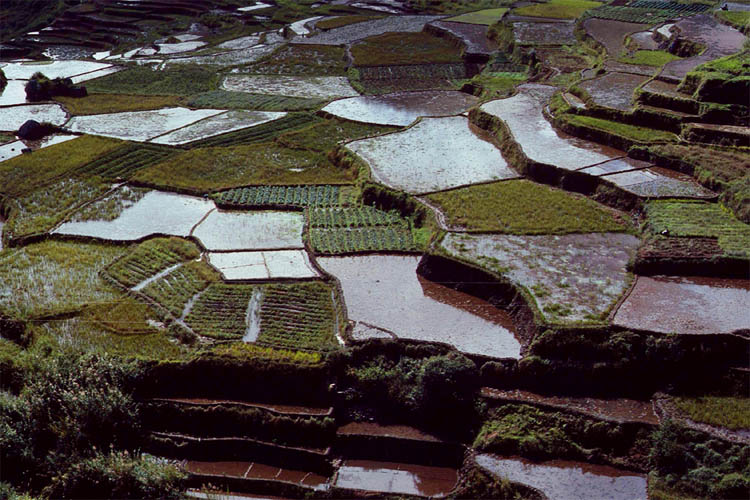
| Sagada countryside
|
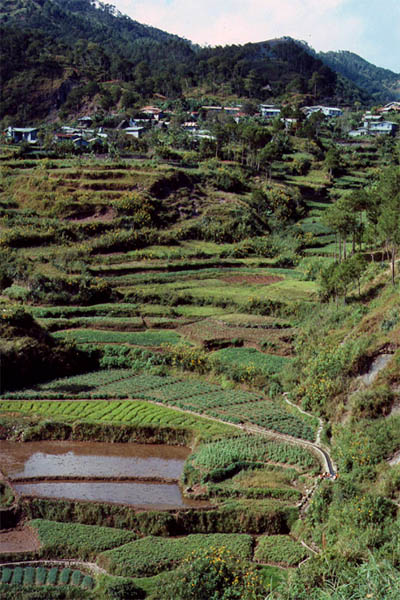
| Rice paddy
|
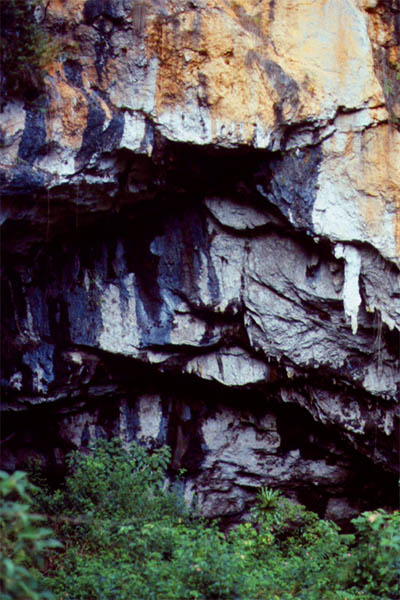
| Cave entry
|
The inside was fantastic. But it also was a little bit frightening. What happens if the lantern of the guide goes off. And I have forgotten my flashlight, too. We would not have found our way back if we would have to be able to, because there was no same way back. We had been sliding down steep rocks, no way to go up again. The guide assured us that this was a roundtrip. Then farther on we squeezed through small holes to jump into pools on the other side and walked through underground lakes (there are also underground rivers in that area).
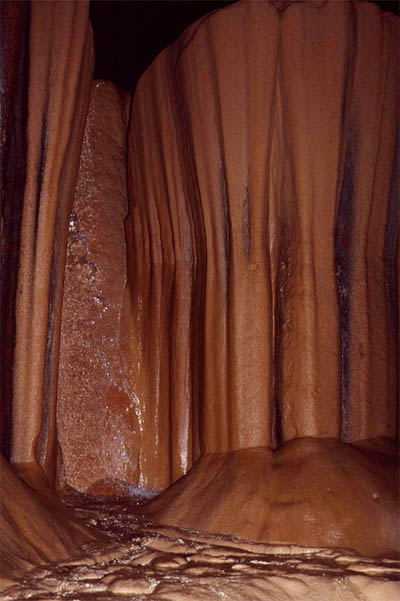
| Smooth slide down
|
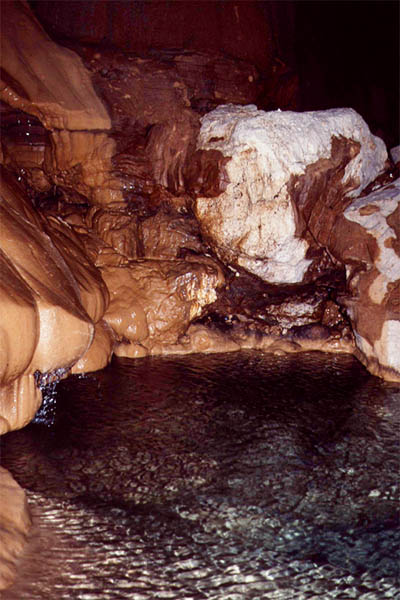
| Clear lake through
|
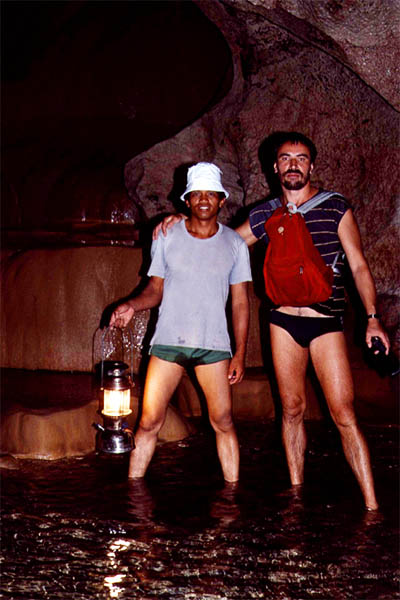
| Hope the lamp doesn't go off
|

| Is this the only way out?
|
Finally we reached the entrance of the cave and we were happy to see the daylight again. We didn't do much more in Sagada. The Munich guy and I left next day. The Swedish guy wanted to stay to do the cave exploration he missed to come with us before. The bus ride back to Bontoc and then further on to Banaue was another "dangerous" endeavour. The view was fantastic but the road was very bumpy.
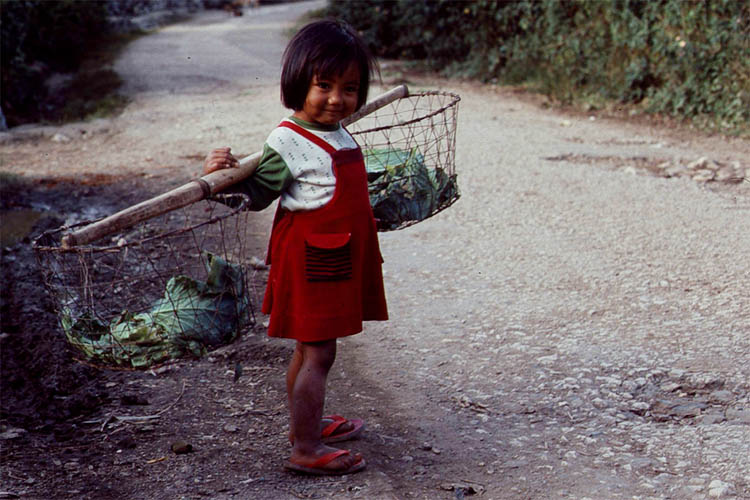
| Little girl must work
|
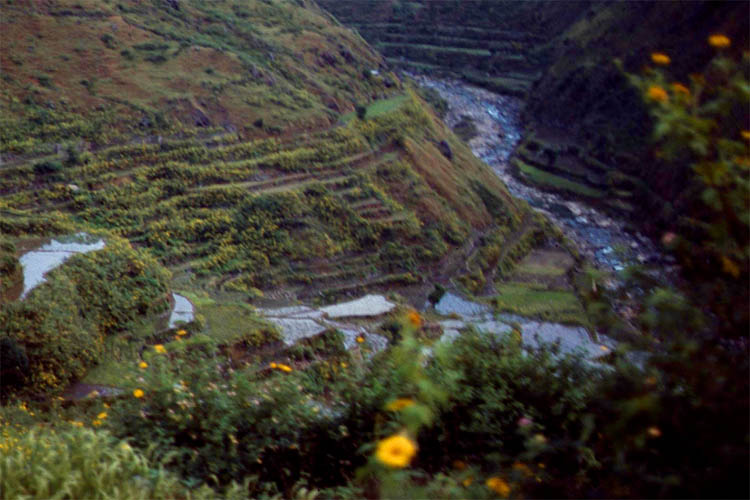
| What a beautiful view
|
It could have been a smooth slide down but would have ended with a crash on the bottom of the gorge. The driver was so nice to let us get off before he dared to cross a landslide. I was watching from the other side expecting to make a photo of my life time, but everything went alright.

| A landslide in front. We better get off
|

| We only can hope the bus doesn't fall down
|
Then we arrived safely in Banaue. The town was small with few simple guesthouses and restaurants. This area in and around is inhabited by the Ifugaos, another tribe of the Igorots. But each of these tribes, while living very close together, were mostly warring against each other thereby practicing headhunting in the old days and not that long ago.

| A small barangay around Banaue
|
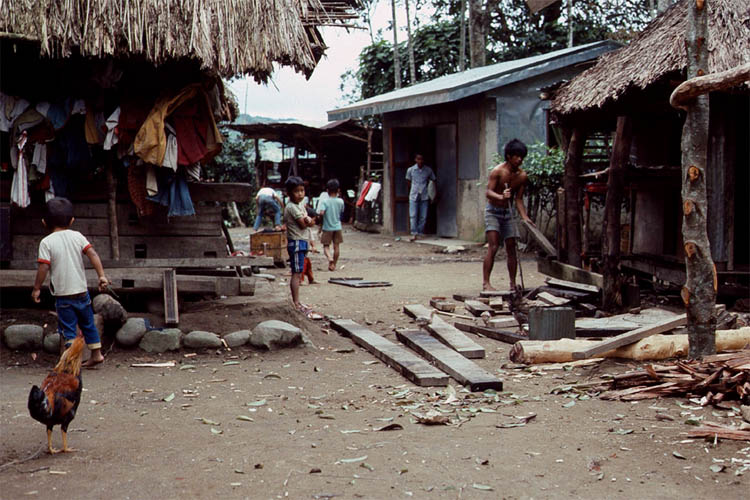
| inhabited by the Ifugaos tribe
|
The eighth worldwonder? Where are the famous rice terraces? We walked around looking for them and came to an Ifugao village. Here they lived like their ancestors, whom they also keep very close, because their corpses are buried under their stilted houses.

| They still are a diligent and busy people
|
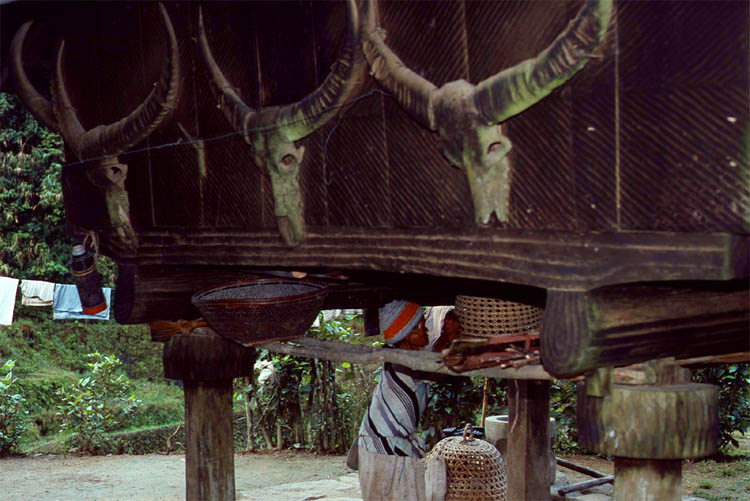
| who also keep their deads under their house
|
First highlight: A traditional Ifugao show all staged for us travelers (no tour groups were around). The pictures will speak for themselves.
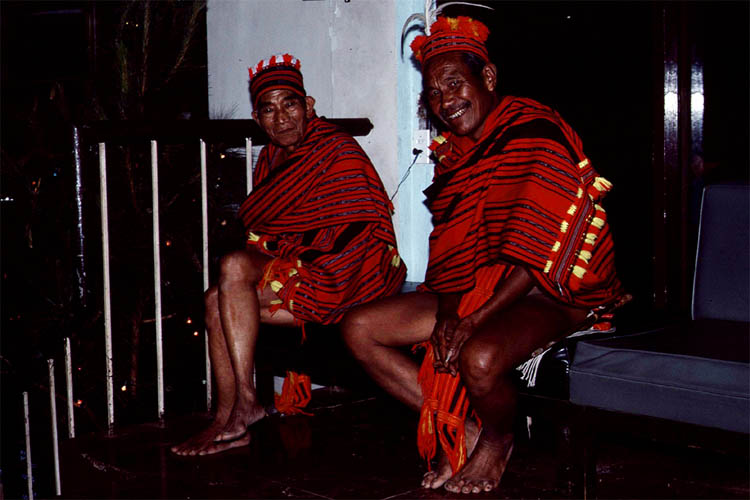
| Ifugaos in their traditional costumes
|
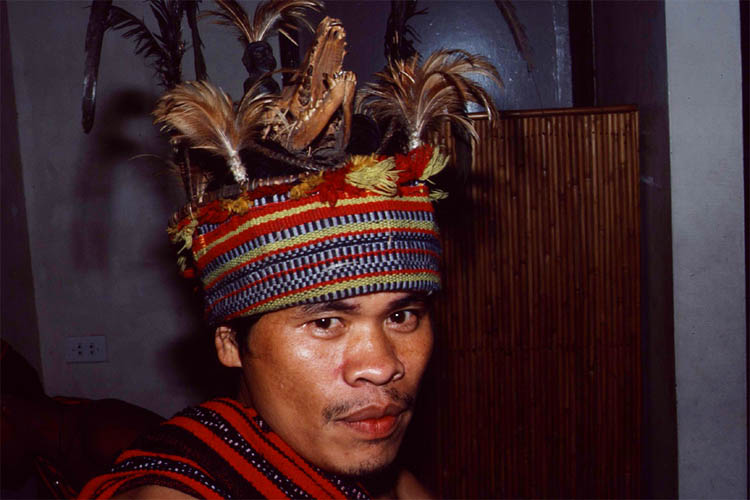
| and with a traditional head dress
|
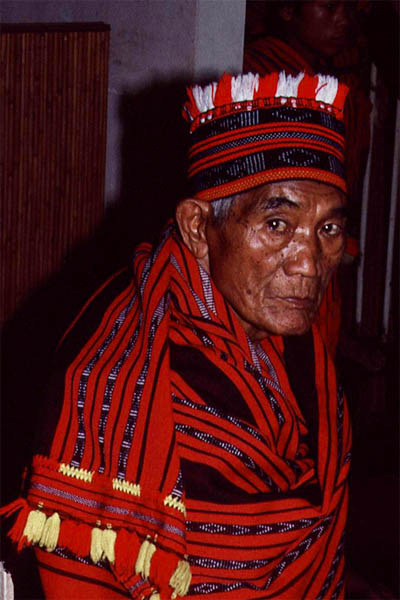
| From the old
|
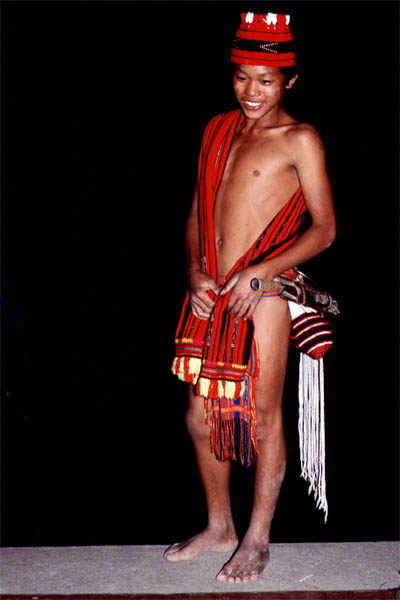
| to the young
|
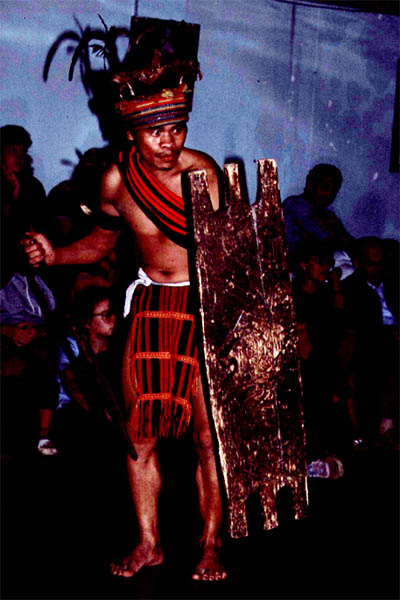
| From the warrior
|
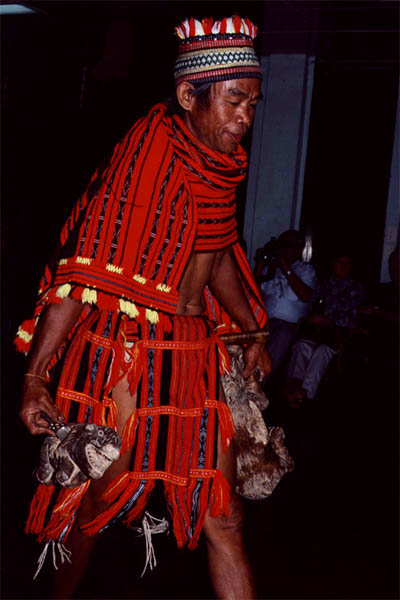
| to the shaman
|

| From dance
|
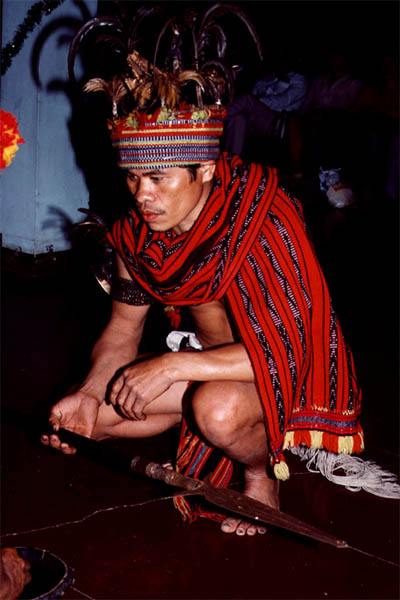
| to contemplation
|
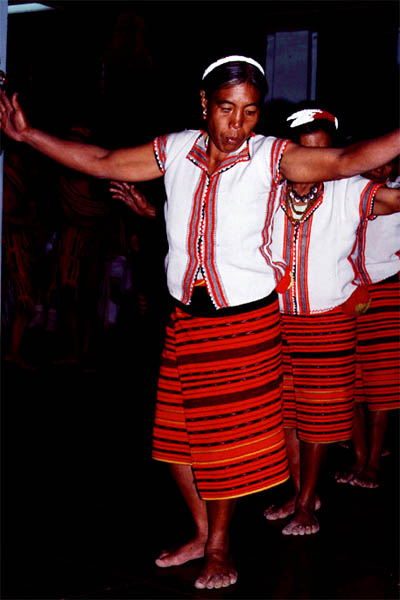
| Women are also dancing
|
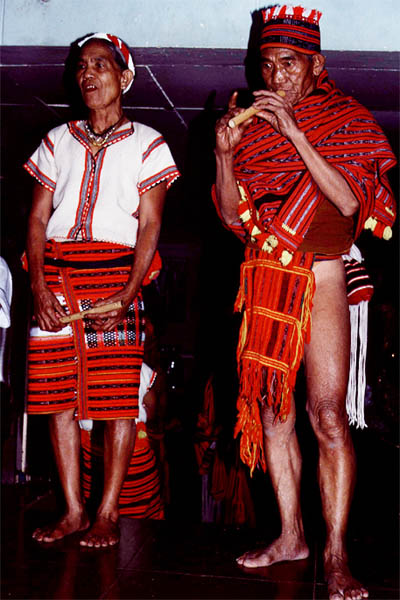
| accompanied by a flutist
|
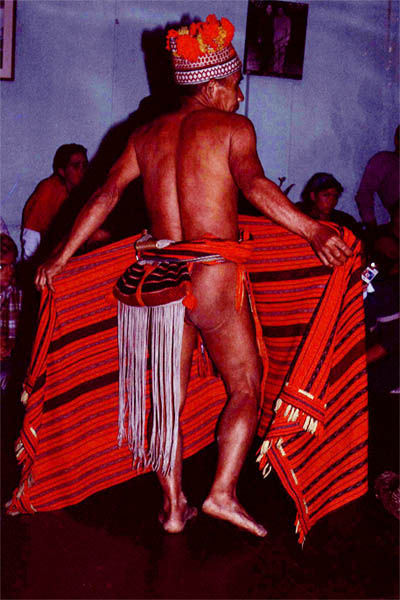
| Now that's the end and last not least
|
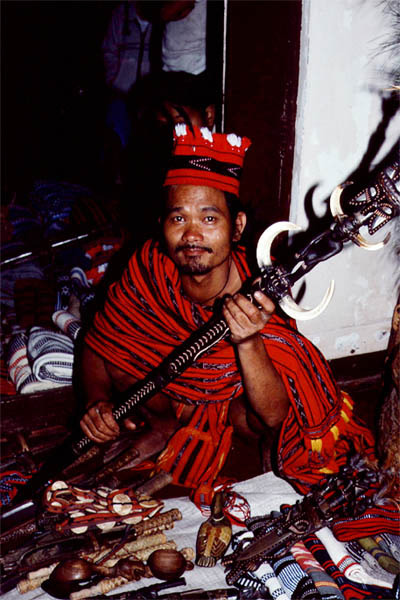
| you have to buy now some souvenirs
|
Next day. We wanted to see the real worldwonder now. But where and how? We were told that we should either trek a long way or hire a jeepney, because there was no regular local transport. I appointed myself the chief and tour manager at the same time, hired that jeepney and rounded up enough other tourists I convinced to make the same trip with me in order to make it as cheap as possible for everybody.
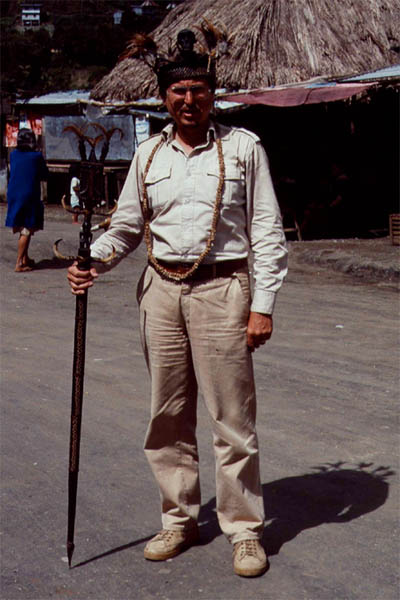
| I borrowed that outfit to become an Ifugao chief
|
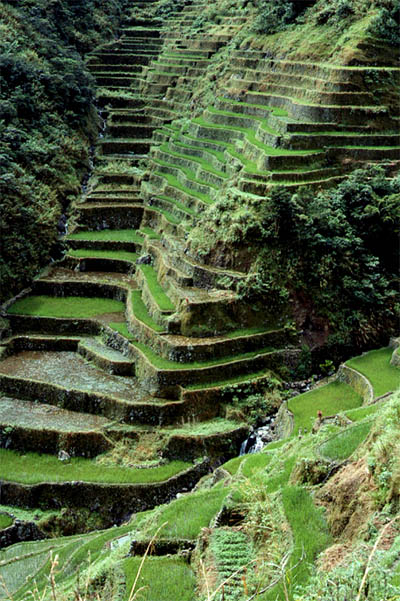
| then I organized the visit of the 8th world wonder
|
After a couple of miles we had to get off the jeepney to walk up the hill from the road. Once on top the view was really fantastic. This was the best spot to admire the rice terraces arranged like an amphitheater and down in the middle was the village of Batad.
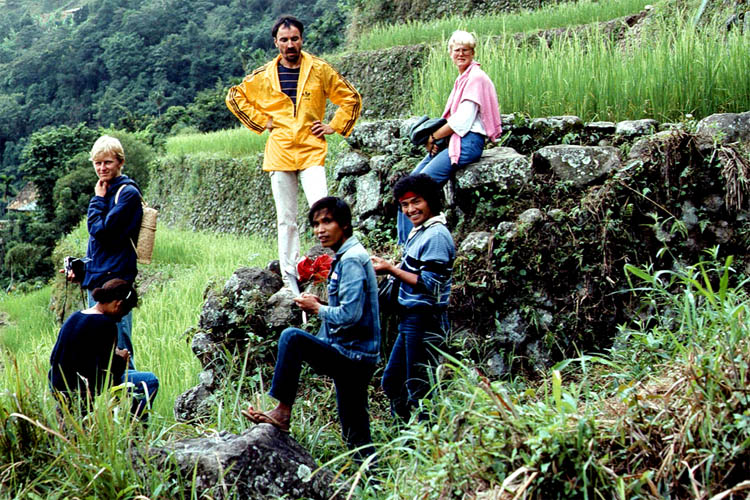
| My fantastic group
|

| and the fantastic view
|
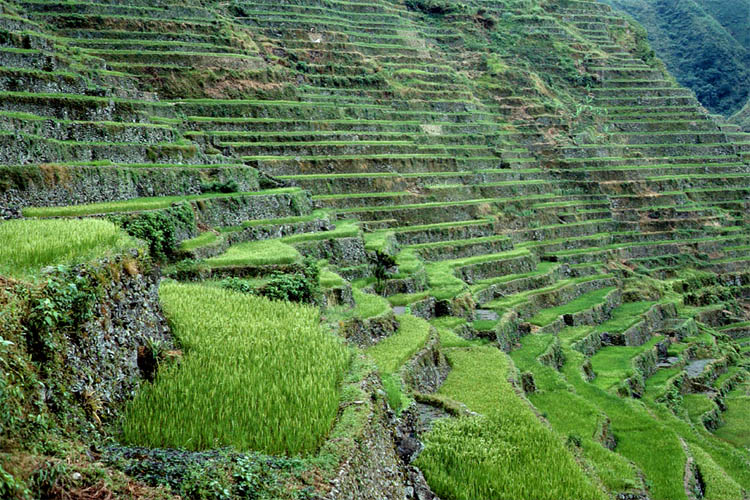
| What an effort to build
|

| What an effort to plant
|
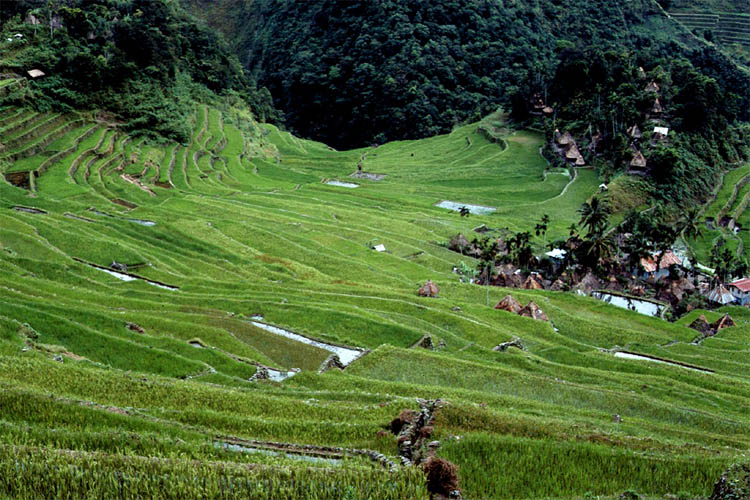
| What a beautiful landscape
|
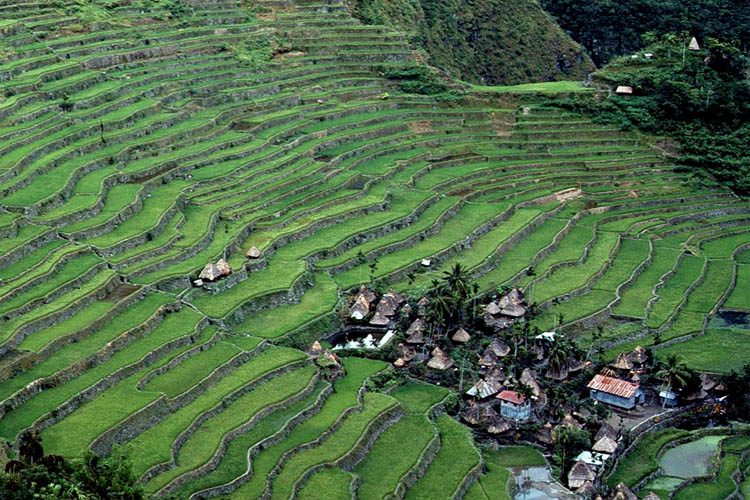
| What a cute old little village
|
The Ifugaos have started to build these rice terraces 3000 years ago. Even if they do not have to build new ones, maintaining these terraces and tending the crops is still hard work. I wonder how many of the next generation will follow their ancestor's tradition or rather go to Manila to get an easier job. Otherwise I fear that the rice terraces will slowly decay, the rice yield (very much needed for the population explosion) will be less and less and in the end also no tourist will come to see and wander around the lost eighth worldwonder.
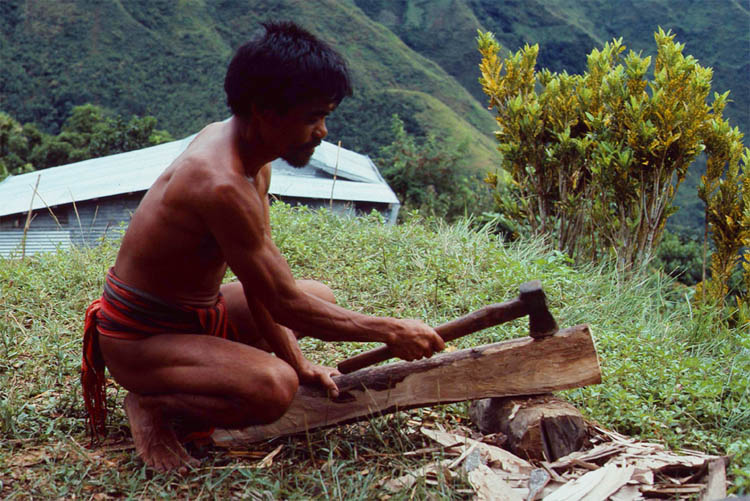
| Ifugao dressed and working like their ancestors
|
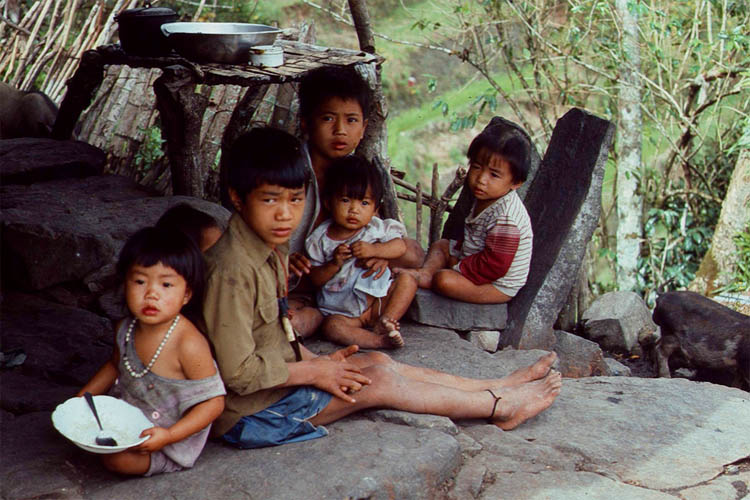
| Will children continue and follow this tradition?
|
But I for now celebrated farewell with and from my friends. We, the Munich guy and a Canadian Japanese lady, vowed to meet again in Pagsanjan. I started back to Manila the next day with an overnight stay in Olongapo at the Subic Bay where the US had their submarine base (not now anymore). Actually I didn't do and see much during my short stay there and I should have skipped it. Next day I finally left for Manila and settled down in the same hotel I stayed before.
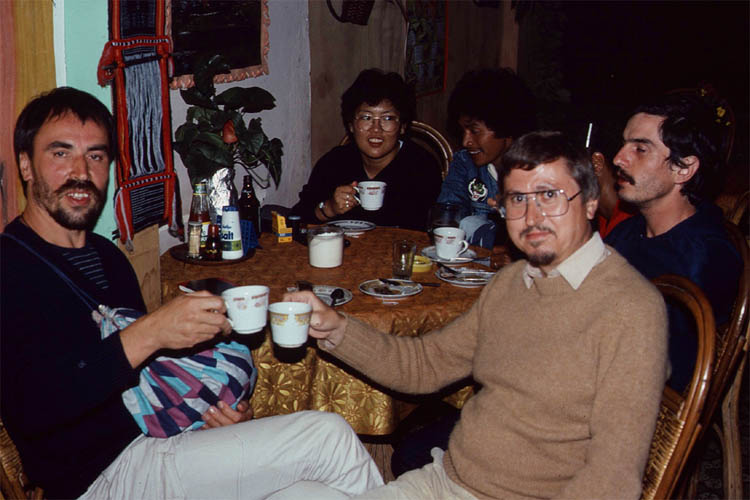
| Last get-together in Banaue
|
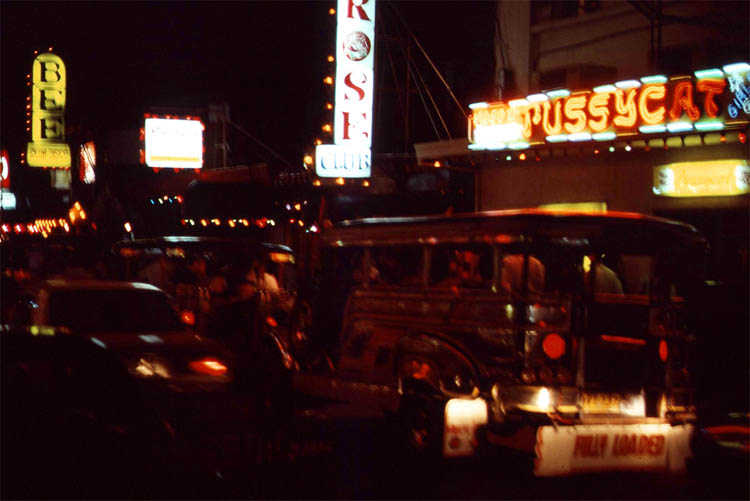
| Then a stop-over in Manila
|
But this time no bar-hopping but attending a cultural show with a mixture of many different traditional dances from all over the Philippines as shown on the following photographs.

| To visit a different cultural show
|
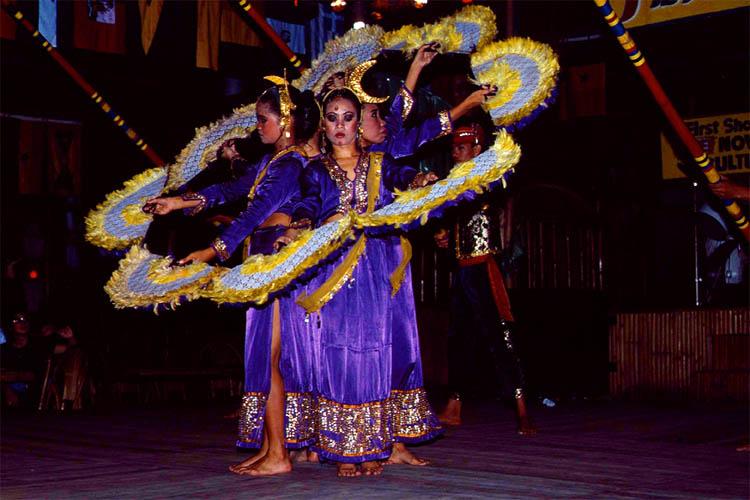
| with different Philippine costumes
|
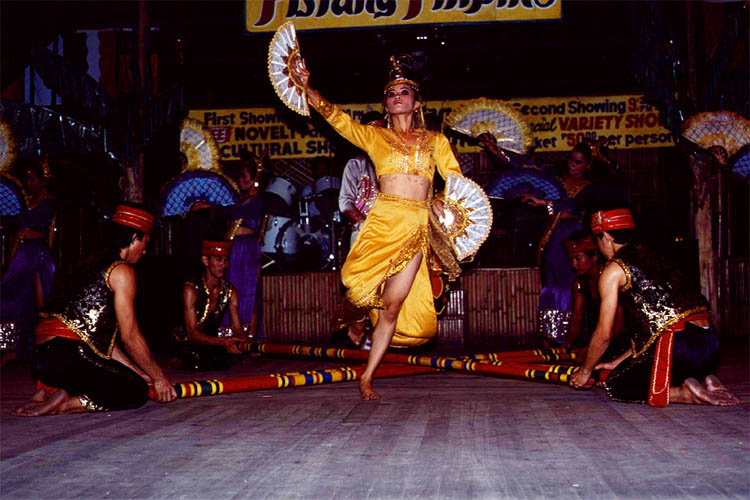
| With a difficult dance
|
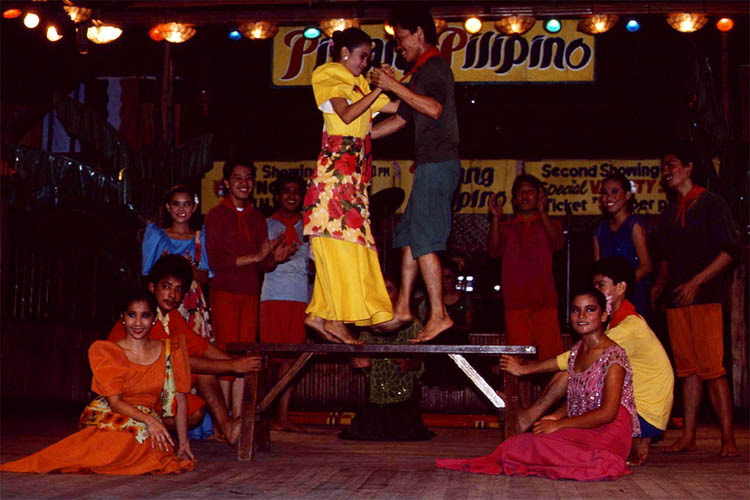
| And difficult to balance
|
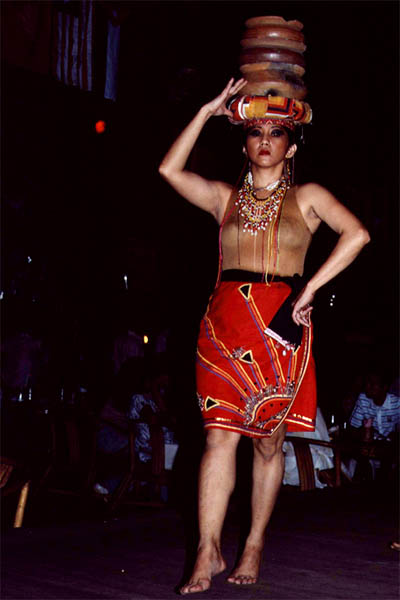
| Girls from all parts of the Philippines
|

| even hula girls from the South Pacific?
|
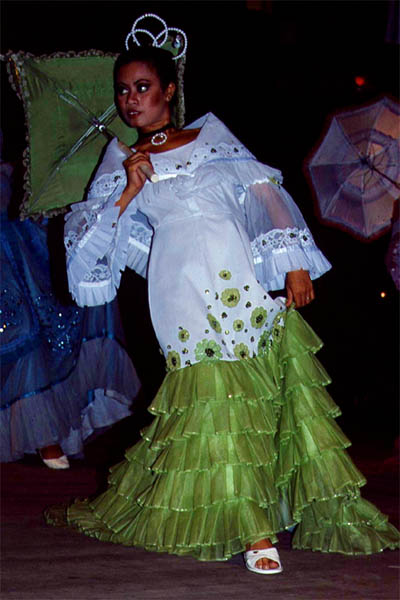
| Girls coming from Spain?
|
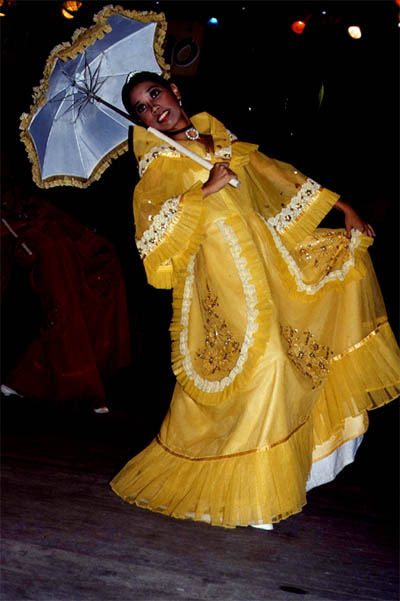
| Or just from Spanish tradition
|
Ok, next day I hit the road again. First by bus to Santa Cruz and then by jeepney to Pagsanjan.
If you want to skip now to the other part, then just hit
Part II - Pagsanjan - Lake Taal - Puerto Galera - Manila
| 









































































